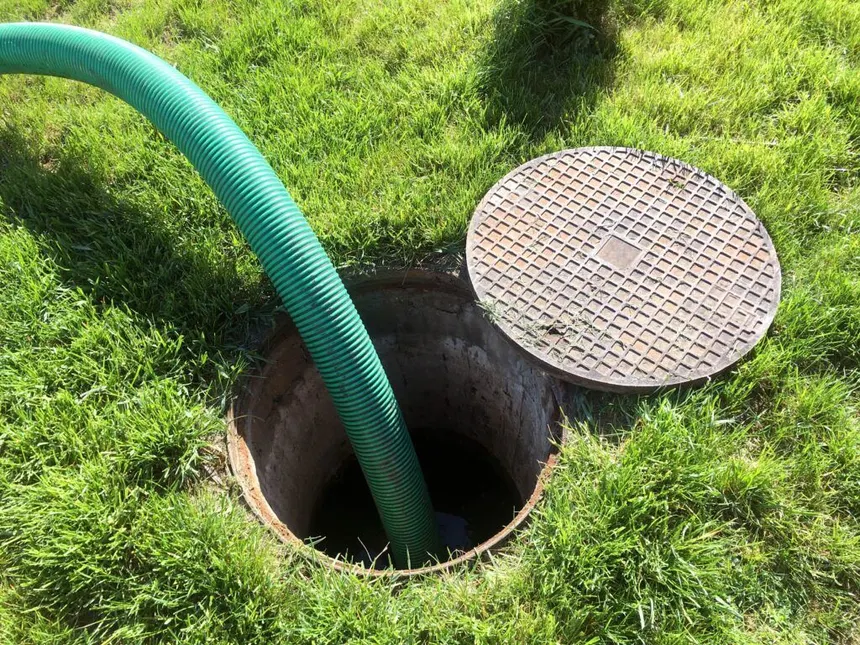
12 Feb Septic Tanks: How to Inspect Your System For Common Problems
When it comes to maintaining a home, some tasks are more visible and urgent than others. While you might prioritize mowing the lawn or fixing a leaky faucet, one of the most critical yet often overlooked aspects of home maintenance is inspecting your septic tank. A well-functioning septic system is essential for the health and safety of your household, the environment, and your wallet. Neglecting it can lead to costly repairs, unpleasant odors, and even environmental contamination.
We’re going to briefly explore why septic tank inspections are so important, common problems that can arise, and how YOU can even inspect your own septic system to ensure it’s in good working order and identify possible issues.
⚠️ Why Inspecting Your Septic Tank is Crucial
1. Prevents Costly Repairs and Replacements
A septic system is a significant investment, and repairing or replacing it can cost thousands of dollars. If things get bad, the average cost for a septic tank replacement is anywhere from $3,500 – $8,500 (and possibly more) depending on soil conditions and tank size. Regular inspections help identify minor issues before they escalate into major problems, saving you money in the long run.
2. Protects Your Health and Safety
A malfunctioning septic system can lead to sewage backups, which pose serious health risks. Harmful bacteria and pathogens from untreated wastewater can contaminate your home, yard, and even nearby water sources.
3. Preserves the Environment
A failing septic system can leak untreated wastewater into the soil, contaminating groundwater, rivers, and lakes. This pollution harms ecosystems and can affect drinking water supplies for your community.
4. Maintains Property Value
This is a big one. A well-maintained septic system is a selling point for potential buyers. If you plan to sell your home, a recent inspection report can provide peace of mind and increase your property’s value.
5. Ensures Efficient System Performance
Regular inspections ensure that your septic system is functioning efficiently, preventing slow drains, foul odors, and other inconveniences.
🤔 Common Problems with Septic Tanks
Understanding the common issues that can arise with septic systems can help you identify problems early and take corrective action. Here are some of the most frequent problems homeowners face:
1. Clogged Pipes and Drainfield
Over time, solid waste, grease, and non-biodegradable materials can accumulate in the pipes or drainfield, causing clogs. This can lead to slow drains, sewage backups, and even system failure.
2. Tank Overflows
If the septic tank isn’t pumped regularly, sludge and scum can build up, reducing the tank’s capacity. This can cause wastewater to overflow into the drainfield or back up into your home.
3. Tree Root Intrusion
This one is quite common and can easily go unnoticed. Tree roots can grow into septic pipes and tanks, causing cracks, blockages, and leaks. This is especially common in older systems or those located near larger trees.
4. Damaged or Collapsed Tanks
Over time, septic tanks can deteriorate due to age, poor construction, tree roots (as seen above), or heavy vehicle traffic above the tank. A damaged or collapsed tank can lead to system failure and environmental contamination.
5. Improper Installation or Design
If a septic system was improperly installed or designed for the property’s soil type and water table, it may not function correctly. This can lead to frequent issues and premature failure.
6. Excessive Water Usage
Using too much water can overwhelm the septic system, preventing it from properly treating wastewater. This is a common problem in households with high water consumption or leaks.
7. Chemical Damage
Harsh chemicals, such as bleach, drain cleaners, and pesticides, can kill the beneficial bacteria in the septic tank that break down waste. This can disrupt the treatment process and lead to system failure.
🔍 How to Inspect a Residential Septic Tank
While some aspects of septic tank inspection require professional expertise, there are several steps homeowners can take to monitor their system’s health. Here’s a guide to inspecting your residential septic tank:
1. Locate Your Septic Tank and Drainfield
The first step is to locate your septic tank and drainfield. You likely know where it is, but if not, check your property records or contact your local health department for a diagram of your system. Once you’ve found the tank, you can begin to identify any issues that may be present.
2. Check for Signs of Trouble
Look for visible signs of problems, such as:
- Sewage backups in your home (e.g., slow drains, gurgling sounds, or bad odors).
- Wet spots or standing water in the drainfield area, which could indicate a clog or overflow.
- Lush, green grass over the drainfield, which may signal a leak.
- Foul odors near the tank or drainfield.
3. Measure Sludge and Scum Levels
Using a sludge judge or a long stick, measure the depth of sludge (solid waste) and scum (floating waste) in the tank. If the sludge layer is within 12 inches of the outlet baffle or the scum layer is within 3 inches of the outlet, it’s time to pump the tank.
4. Inspect the Tank Structure
Check the tank for cracks, leaks, or signs of corrosion. If you notice any damage, it’s likely time to contact a professional for inspection and repairs.
5. Examine the Drainfield
Inspect the drainfield for signs of failure, such as pooling water, soggy soil, or foul odors. Avoid driving or parking heavy vehicles over the drainfield, as this can compact the soil and damage the pipes.
6. Monitor Water Usage
Keep track of your household’s water usage and look for signs of leaks. Excessive water use can overwhelm the septic system, so consider installing water-efficient fixtures and spreading out laundry and dishwasher loads.
7. Schedule Professional Inspections
While DIY inspections are helpful, it’s essential to have your septic system professionally inspected every 1-3 years. A professional can perform a thorough evaluation, including:
Checking the tank’s structural integrity.
Testing the drainfield’s absorption capacity.
Assessing the system’s overall performance.
👉 We do this all the time for customers in the surrounding area. Give us a call at 843-448-5016 to schedule an inspection done with excellent service and competitive pricing.
✅ Tips for Maintaining Your Septic System
To keep your septic system in top condition, follow these maintenance tips:
Pump the tank regularly (every 3-5 years, depending on usage).
Avoid flushing non-biodegradable items (e.g., wipes, diapers, and feminine hygiene products).
Limit the use of harsh chemicals that can harm beneficial bacteria.
Plant trees and shrubs away from the septic system to prevent root intrusion.
Divert rainwater away from the drainfield to prevent oversaturation.
📝 Recap
Inspecting your septic tank is a vital part of homeownership that should never be overlooked. By identifying and addressing problems early, you can prevent costly repairs, protect your health, and preserve the environment. While some inspections can be done on your own, it’s always a good idea to enlist the help of a professional for a thorough evaluation.
Remember, a well-maintained septic system is not only more efficient and reliable but also contributes to the long-term value and safety of your property. So, don’t wait until you notice a problem—schedule a septic tank inspection today and enjoy peace of mind knowing your system is in good working order.


Sorry, the comment form is closed at this time.